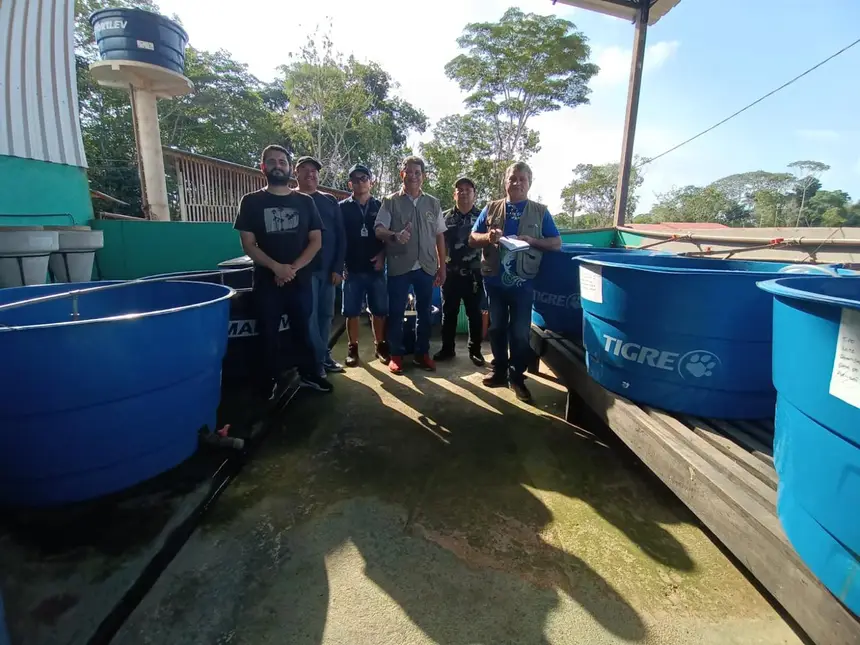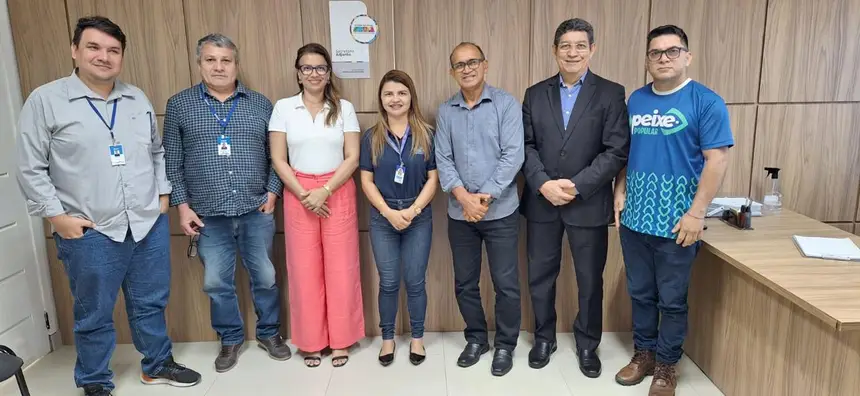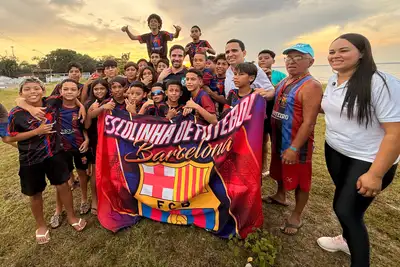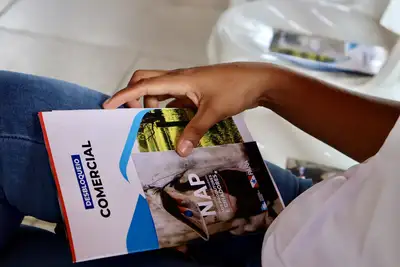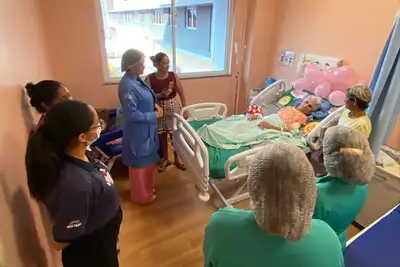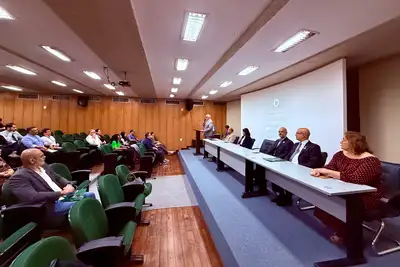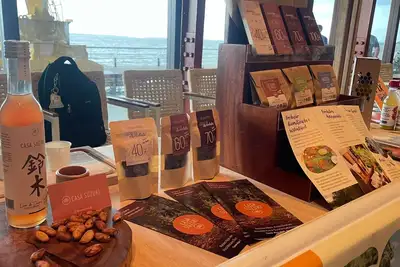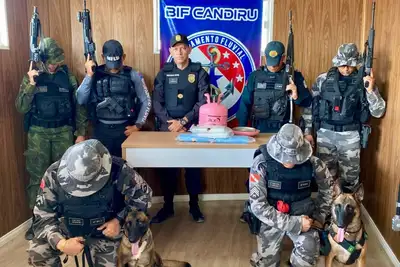Sedap and the government of Amapá conduct exchange to strengthen the Amazon shrimp chain
Joint initiative aims to expand captive production and reinforce the sustainability of aquaculture in the Amazon region
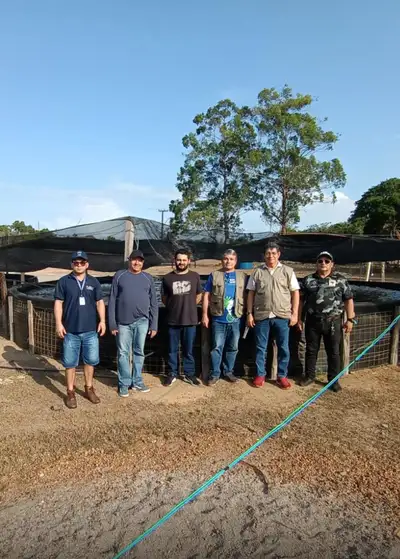
The Secretary of Agricultural Development and Fisheries (Sedap) of Pará participated this week in a technical mission in the municipality of Mazagão, in Amapá, as part of the Strengthening and Sustainability Program for the Amazon shrimp production chain (Macrobrachium amazônicum), implemented since 2023. The action was promoted in partnership with the Secretary of Fisheries and Aquaculture of the State of Amapá (SEPAq), focusing on the exchange of experiences and the development of protocols for the captive breeding of the species.
The Sedap team, represented by the Directorate of Fisheries and Aquaculture Development, learned about the post-larvae production and fattening project for shrimp, installed on a private property monitored by SEPAq. Although still in the experimental phase, the initiative already shows satisfactory results, according to the assessment of technical consultant Sting Duarte, a fishing engineer and doctor in animal nutrition.
Technical cooperation strengthens aquaculture in the Amazon
The director of fisheries at Sedap, Orlando Lobato, led the Pará delegation and highlighted the importance of integration between the states. “We visited the mouth of Mazagão and the municipality of Tartarugalzinho, strengthening the development of this important activity that aligns with all sustainability principles advocated by the COP 30 of the United Nations,” he stated.
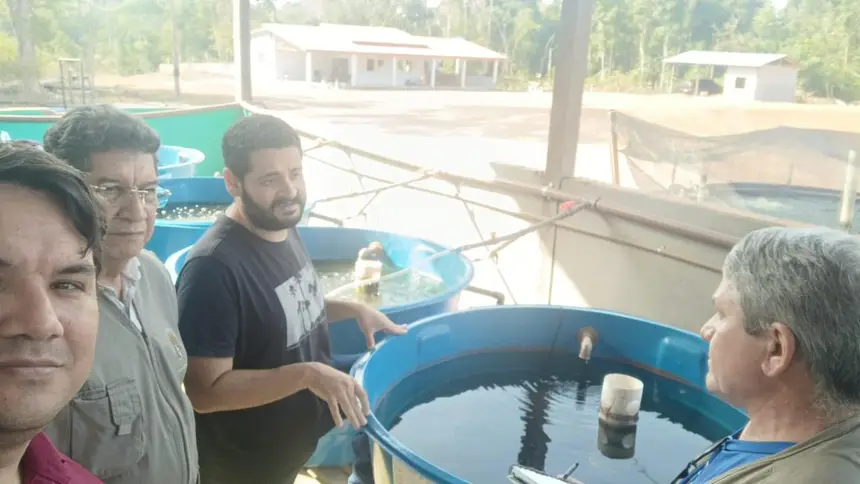
During the visit, alternatives for producing specific feed for the Amazon shrimp were also discussed, replacing the current diet based on marine feed. The proposal is to test formulations with different protein levels, using regional by-products such as oils and pomaces. The discussion was led by Sedap's fishing engineer, Thiago Catuxo, in dialogue with consultant Sting Duarte.
Exchange favors replication of sustainable practices in Pará
According to Sedap's fishing engineer, Ediano Sandes, the exchange with Amapá aims to consolidate production protocols to be applied on a large scale in Pará, with technical monitoring from the secretary. “The idea is to reproduce successful practices, creating opportunities for aquaculture and reducing fishing pressure on natural stocks, which are currently in a worrying decline,” he explained.
The program has already involved listening and articulations with riverside communities from 11 municipalities in Marajó (Muaná, Curralinho, Oeiras, Gurupá, Breves, Portel, Melgaço, Afuá, Chaves, and São Sebastião da Boa Vista) and from Abaetetuba, in the Tocantins Integration Region.
The secretary of SEPAq, Paulo Nogueira, highlighted the institutional alignment between the two states and the strategic importance of the initiative. “SEPAq, together with the State of Amapá, will be present at COP 30 in Belém do Pará, participating in discussions on topics involving fishing and aquaculture in the Amazon,” he announced.
The technical mission was supported by the Cabo Norte Institute, led by Samuel Lima, responsible for local coordination with entrepreneur Márcio Lima de Matos, owner of the visited area, and with consultant Sting Duarte.


